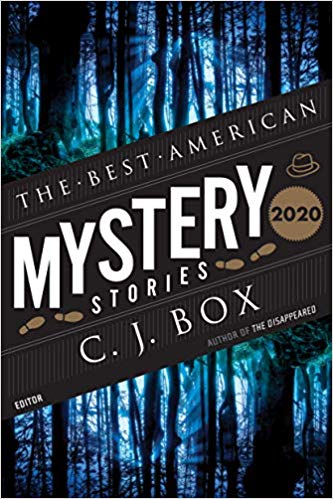Each year, the Writers’ Police Academy hosts a wildly popular hands-on training event for writers, readers, fans, and anyone else with an interest in police procedure and the forensics used to solve crimes. If you’ve attended you know the event is like no other. If you haven’t been then you should sign up TODAY while there’s still time. It is an event of a lifetime.
The WPA is a massive production that requires multiple venues, busing, facility rentals, speaker and instructor expenses, training materials, equipment, supplies, caterers, etc. It’s expensive to say the least. Far more costly than, for example, a typical conference where the main expenses are hotel meeting rooms and A/V equipment. And we have those as well.
To help keep registration costs at a bare minimum, The WPA hosts two writing contests as fundraisers—the annual “Tales From the Graveyard Shift” anthology, and the Golden Donut 200-Word Short Story Contest. The contests are fun and are beneficial to those who enter, the WPA, and the attendees of the Writers’ Police Academy events.
The winners of the three spots in the anthology contest have their stories published in a traditionally published book along with stories written by several top bestselling authors, such as Heather Graham, Reed Farrel Coleman, Lisa Regan, Denise Grover Swank, and more. The 2019 foreword was written by Lee Child, and Lisa Gardner is writing the foreword for PEOPLE ARE STRANGE, the 2020 WPA anthology.
The anthology receives quite a bit of attention. For example, just this week it was announced that Rick McMahan’s story “Baddest Outlaws” from the 2019 AFTER MIDNIGHT anthology is being included in Otto Penzler ‘s BEST AMERICAN MYSTERY STORIES 2020 collection!

The Golden Donut Short Story Contest
Winners of this challenging and fun contest receive the coveted Golden Donut Award along with a free registration to a Writers’ Police Academy event (the 2020 contest winner receives free registration to the 2021 WPA).
New Arc Books will soon be publishing a collection of Golden Donut short stories.

Golden Donut Short Story Contest Rules
The rules are simple. Write a story about the photograph using exactly 200 words — including the title. Each story needs an original title, and the image must be the main subject of the story. No clues as to the subject matter of the image or where it was taken. You decide. Let your imagination run wild. Remember though, what you see in the image above absolutely must be the main subject of your tale.
Entry Fee: $25 per submission
3 submissions allowed per person.
Submission deadline: Midnight (EST) July 1, 2020
200 Words
No more. No less. Including the title, the story must be 200 words. “Don’t” is two words. “OMG” is three words. “Smith-Jones” is two words. Count them.
Finished Product
All stories are to be polished and complete. They must have a beginning, middle and a twisted, surprise ending.
Fairly Judged
The Golden Donut contest is judged blindly. Each entry is assigned a number so the judges do not see the writers’ names.
Reader Panel
A panel of readers will select their 12 favorite stories and then forward them to the final judge. All decisions are final. The judge will review and send the winning entry to the WPA.
About the 2020 Golden Donut Judge, Linda Landrigan

Linda Landrigan, editor-in-chief of Alfred Hitchcock’s Mystery Magazine
Assuming the mantle of editor-in-chief in 2002, Linda Landrigan has also edited the commemorative anthology Alfred Hitchcock’s Mystery Magazine Presents Fifty Years of Crime and Suspense (2006) and the digital anthology Alfred Hitchcock’s Mystery Magazine Presents Thirteen Tales of New American Gothic (2012), and has found time to be active on the board of the New York City Chapter of the Women’s National Book Association. In 2008, Linda and her “partner in crime,” Janet Hutchings – editor of Ellery Queen’s Mystery Magazine – were presented with the Poirot Award from Malice Domestic for their contributions to the mystery genre.
Linda will read the top twelve entries and then pick the winning story.
Announced at the Banquet
While the winner will be announced at the WPA banquet, the winner does not need to be present to win.
Open to All
Contest is open to everyone. You don’t have to attend the conference to win. You don’t even have to be a writer.

There’s still time to sign up!
MurderCon, presented by the Writers’ Police Academy, is a special hands-on training event for writers of all genres, with a specific focus on solving the crime of murder. It’s a unique juncture of fiction and fact taking place August 6-9, 2020 at the elite Sirchie compound in Raleigh, N.C. Sirchie is the Global Leader in Crime Scene Investigation and Forensic Science Solutions. Their products and training have helped solve thousands upon thousands of murder cases worldwide.
Attendees receive the same instruction that’s offered to, and attended by, top homicide detectives and investigators from around the globe.
MurderCon’s incredibly detailed and cutting-edge workshops, taught by some of the world’s leading experts, has never been available to writers, anywhere.
Yes, MurderCon is a “Killer” event, and you’re invited to attend!
Keynote speaker – David Baldacci
Special Guest Speakers – Featuring pathologist Dr. Judy Melinek & author/husband TJ Mitchell. Also, Ray Krone, death row exoneree. Hands-on classes by FBI, ATF, Sirchie, entomologists, forensic geologist, anthropologist, clandestine grave expert, medical examiners, private investigators, homicide and sexual assault detectives, & many more.
To add to the fun and excitement, there’s a murder to solve, by YOU!

And, there’s the BIG news … Well, it’s still a secret but here’s a hint. YOU and REACHER!!
Sign up TODAY at:























